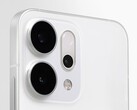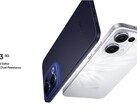Conclusion on the Oppo Reno 13 Pro 5G
Reno is a gambling town in the USA, Italian for the river Rhine and a high-quality smartphone series from Oppo, which has reached new heights with the Oppo Reno 13 Pro 5G: The phone can keep up with more expensive phones in many areas and currently costs just 600 euros (around 690 USD) online.
Although it has become more expensive compared to its predecessor, the Reno 13 Pro is still well equipped: primarily due to the lightweight, high-quality and waterproof metal casing, the fast Wi-Fi, the good camera system and the decent amount of memory. 6 years of security updates are also promised.
However, you do have to do without some features of a high-end smartphone: For example, there is no periscope zoom camera here, no image output via the USB port and the display doesn't get quite as bright as on the top phones. The Reno 13 Pro can also heat up quite a bit under load. In this price range, there is already a Poco F7 Ultra with Snapdragon 8 Elite, which offers significantly more power.
If you are looking for a high-quality smartphone at a fair price and don't need top performance, you can hardly go wrong with the Oppo Reno 13 Pro 5G.
Pros
Cons
Price and availability
The Oppo Reno 13 Pro 5G is widely available in Europe and Asia. In North America, however, you will have a hard time finding it.
Table of Contents
- Conclusion on the Oppo Reno 13 Pro 5G
- Specifications
- Case and features - everything you need is here
- Communication and operation - Fast WLAN
- Software and sustainability - 6 years of updates at Oppo
- Cameras - 50 megapixels on both sides
- Display - Bright AMOLED
- Performance, emissions and battery life - Not quite as fast, but long-lasting
- Notebookcheck overall rating
- Possible alternatives compared
Specifications
Case and features - everything you need is here
Despite its huge 6.83-inch screen, the Oppo Reno 13 Pro 5G is only a few millimetres larger than the competition. It is also slimmer and weighs less at 195 grams, even though it has a high-capacity battery.
The chassis is very comfortable to hold and looks very high-quality. Graphite grey is the color of our test device and it is very classic. For those who like it more striking, there is also a version in Plume Purple. The workmanship is high quality.
Thanks to Gorilla Glass 7i, the screen is well protected against impacts and thanks to IP68/IP69 certification, you don't have to worry if the phone falls into water.
512 GB of mass storage is standard in this price range, as is 12 GB of RAM. An eSIM and a nano-SIM are supported, NFC and an infrared blaster for use as a remote control are also on board.
Communication and operation - Fast WLAN
WiFi 6 is supported by the smartphone, but the little-used 6 GHz network cannot be chosen. In our Wi-Fi test with the Asus ROG Rapture AXE11000 reference router, the device nevertheless achieved fast transfer rates of over 1,500 MBit/s. Fortunately, the transmissions are also very stable.
The cellular modem supports 5G as the fastest standard and offers many frequencies. This ensures that the Oppo Reno 13 Pro 5G can also be used to access the mobile Internet when traveling.
Thanks to the 240 Hz sampling rate and up to 120 frames per second, the touchscreen responds very quickly to inputs. Even slight movements are enough to navigate through the smooth system.
The phone can be unlocked using facial recognition or a fingerprint sensor. The latter is located behind the screen and recognizes our fingerprint quickly and reliably, although a slight wait time must be allowed for when unlocking. Facial recognition also works flawlessly, but is not quite as reliable due to the two-dimensional recognition.
| Networking | |
| Oppo Reno13 Pro | |
| iperf3 transmit AXE11000 | |
| iperf3 receive AXE11000 | |
| Xiaomi Poco F7 Ultra | |
| iperf3 transmit AXE11000 | |
| iperf3 receive AXE11000 | |
| Xiaomi 15 Pro | |
| iperf3 transmit AXE11000 6GHz | |
| iperf3 receive AXE11000 6GHz | |
| OnePlus 13R | |
| iperf3 transmit AXE11000 | |
| iperf3 receive AXE11000 | |
| iperf3 transmit AXE11000 6GHz | |
| iperf3 receive AXE11000 6GHz | |
| Realme GT 6 | |
| iperf3 transmit AXE11000 | |
| iperf3 receive AXE11000 | |
| Average 802.11 a/b/g/n/ac/ax | |
| iperf3 transmit AXE11000 | |
| iperf3 receive AXE11000 | |
| iperf3 transmit AXE11000 6GHz | |
| iperf3 receive AXE11000 6GHz | |
| Average of class Smartphone | |
| iperf3 transmit AXE11000 | |
| iperf3 receive AXE11000 | |
| iperf3 transmit AXE11000 6GHz | |
| iperf3 receive AXE11000 6GHz | |
Software and sustainability - 6 years of updates at Oppo
The system is based on Android 15, with Oppo overlaying its ColorOS 15, which offers a very clean and smooth system. The manufacturer promises updates until 2031, i.e. for 6 years from the time of testing.
The packaging is plastic-free, but there is no further information on the sustainability of the product.
Cameras - 50 megapixels on both sides
With its camera system, Oppo wants to compete with significantly more expensive phones and has installed two 50-megapixel cameras on the back: a main camera and a telephoto camera so that a hybrid zoom is possible.
The main camera does a very good job and offers sharp images of plants or other panoramas. Sharpness and dynamic range remain at a high level in low light. Videos can be recorded in a maximum of 4K at 60 fps and also offer very good image quality with an almost imperceptible autofocus.
The wide-angle camera only has a resolution of 8 megapixels. It takes passable pictures, but small details are hardly visible.
The selfie camera also has a resolution of 50 megapixels and takes nice pictures.
Image comparison
Choose a scene and navigate within the first image. One click changes the position on touchscreens. One click on the zoomed-in image opens the original in a new window. The first image shows the scaled photograph of the test device.
Main cam - flowersMain cam - outdoorsMain cam - low lightWide angle cam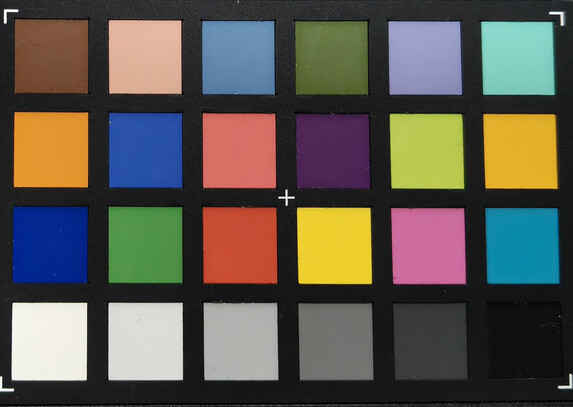

Display - Bright AMOLED
The Oppo Reno 13 Pro 5G's screen achieves a peak brightness of 987 cd/m² in everyday use with the brightness sensor on. Some competitors are a little brighter and the Xiaomi Poco F7 Ultra plays in a completely different league. However, the AMOLED display in the Oppo Reno 13 Pro is easily sufficient for everyday use, even on bright days outdoors.
At low brightness, we measured flickering of around 93 Hz, so sensitive people should try out the screen before buying.
If you select "Pro" as the color setting, the individual tones are displayed quite accurately and a blue cast is not visible.
| |||||||||||||||||||||||||
Brightness Distribution: 93 %
Center on Battery: 987 cd/m²
Contrast: ∞:1 (Black: 0 cd/m²)
ΔE ColorChecker Calman: 1.25 | ∀{0.5-29.43 Ø4.78}
ΔE Greyscale Calman: 2.4 | ∀{0.09-98 Ø5}
99.7% sRGB (Calman 2D)
Gamma: 2.26
CCT: 6688 K
| Oppo Reno13 Pro AMOLED, 2800x1272, 6.8" | Xiaomi Poco F7 Ultra Flow AMOLED, 3200x1440, 6.7" | Xiaomi 15 Pro AMOLED, 3200x1440, 6.7" | OnePlus 13R AMOLED, 2780x1264, 6.8" | Realme GT 6 AMOLED, 2780x1264, 6.8" | |
|---|---|---|---|---|---|
| Screen | 34% | 6% | 23% | 27% | |
| Brightness middle (cd/m²) | 987 | 1846 87% | 1016 3% | 1213 23% | 975 -1% |
| Brightness (cd/m²) | 958 | 1850 93% | 1017 6% | 1206 26% | 974 2% |
| Brightness Distribution (%) | 93 | 93 0% | 98 5% | 97 4% | 98 5% |
| Black Level * (cd/m²) | |||||
| Colorchecker dE 2000 * | 1.25 | 1.2 4% | 1.15 8% | 1 20% | 0.8 36% |
| Colorchecker dE 2000 max. * | 3.34 | 2.9 13% | 3.57 -7% | 2.3 31% | 1.4 58% |
| Greyscale dE 2000 * | 2.4 | 2.3 4% | 1.9 21% | 1.6 33% | 0.9 62% |
| Gamma | 2.26 97% | 2.25 98% | 2.2 100% | 2.22 99% | 2.22 99% |
| CCT | 6688 97% | 6707 97% | 6677 97% | 6546 99% | 6467 101% |
* ... smaller is better
Screen Flickering / PWM (Pulse-Width Modulation)
| Screen flickering / PWM detected | 93 Hz Amplitude: 12 % | ||
The display backlight flickers at 93 Hz (worst case, e.g., utilizing PWM) . The frequency of 93 Hz is very low, so the flickering may cause eyestrain and headaches after extended use. In comparison: 53 % of all tested devices do not use PWM to dim the display. If PWM was detected, an average of 8108 (minimum: 5 - maximum: 343500) Hz was measured. | |||
Measurement series with fixed zoom level and different brightness settings (The amplitude curve at minimum brightness looks flat, but this is due to the scaling. The info box shows the enlarged version of the amplitude at minimum brightness)
Display Response Times
| ↔ Response Time Black to White | ||
|---|---|---|
| 1.5 ms ... rise ↗ and fall ↘ combined | ↗ 0.6 ms rise | |
| ↘ 0.9 ms fall | ||
| The screen shows very fast response rates in our tests and should be very well suited for fast-paced gaming. In comparison, all tested devices range from 0.1 (minimum) to 240 (maximum) ms. » 8 % of all devices are better. This means that the measured response time is better than the average of all tested devices (20.2 ms). | ||
| ↔ Response Time 50% Grey to 80% Grey | ||
| 2 ms ... rise ↗ and fall ↘ combined | ↗ 0.9 ms rise | |
| ↘ 1.1 ms fall | ||
| The screen shows very fast response rates in our tests and should be very well suited for fast-paced gaming. In comparison, all tested devices range from 0.165 (minimum) to 636 (maximum) ms. » 8 % of all devices are better. This means that the measured response time is better than the average of all tested devices (31.6 ms). | ||
Performance, emissions and battery life - Not quite as fast, but long-lasting
With the MediaTek Dimensity 8350 instead of a high-end SoC, the manufacturer has opted for a processor that just makes it into the upper class. In everyday use, you can look forward to a smooth system. Even somewhat more demanding tasks are completed quickly. However, if you want real high-end power, you are better served by the competition.
The UFS 3.1 memory is slower compared to similarly priced phones.
The heat build-up on the casing can actually be quite noticeable: We measured up to 51.1 °C after prolonged load. The SoC also throttles noticeably after several runs of a benchmark and sometimes only provides half or even a third of the original power.
The speaker on the bottom edge is supported by the earpiece and together they can get quite loud. The sound is balanced and quite full. If you press the volume up button again at maximum, the "Ultra volume mode" is activated, which makes the smartphone even more audible in loud environments. However, the treble in particular is boosted, making the sound unpleasant in quiet environments in this mode.
There are numerous audio codecs so that you can easily connect your headphones or speakers via Bluetooth.
Oppo installs a battery with a capacity of 5,800 mAh. This means the phone lasts for over 23 hours in our Wi-Fi test, which is enough for at least two days of normal use. The phone can be charged with up to 80 watts, the battery is fully charged again in a maximum of one hour.
| Geekbench AI | |
| Single Precision NPU 1.5 | |
| Oppo Reno13 Pro | |
| Average MediaTek Dimensity 8350 (1106 - 1131, n=3) | |
| Average of class Smartphone (80 - 5210, n=60, last 2 years) | |
| Half Precision NPU 1.5 | |
| Average MediaTek Dimensity 8350 (4488 - 4555, n=3) | |
| Oppo Reno13 Pro | |
| Average of class Smartphone (80 - 36297, n=60, last 2 years) | |
| Quantized NPU 1.5 | |
| Average of class Smartphone (133 - 49889, n=60, last 2 years) | |
| Average MediaTek Dimensity 8350 (4546 - 4549, n=3) | |
| Oppo Reno13 Pro | |
| Oppo Reno13 Pro | Xiaomi Poco F7 Ultra | Xiaomi 15 Pro | OnePlus 13R | Realme GT 6 | Average 512 GB UFS 3.1 Flash | Average of class Smartphone | |
|---|---|---|---|---|---|---|---|
| AndroBench 3-5 | 61% | 83% | 71% | 50% | -5% | 8% | |
| Sequential Read 256KB (MB/s) | 2008 | 4002.68 99% | 3998.65 99% | 3987.44 99% | 3452.12 72% | 1872 ? -7% | 2228 ? 11% |
| Sequential Write 256KB (MB/s) | 1637 | 3464.43 112% | 3673.38 124% | 3201.32 96% | 3211.78 96% | 1324 ? -19% | 1851 ? 13% |
| Random Read 4KB (MB/s) | 237 | 311.24 31% | 409.67 73% | 374.54 58% | 315.76 33% | 288 ? 22% | 296 ? 25% |
| Random Write 4KB (MB/s) | 411 | 411.78 0% | 555.55 35% | 542.13 32% | 397.65 -3% | 355 ? -14% | 337 ? -18% |
(-) The maximum temperature on the upper side is 51.1 °C / 124 F, compared to the average of 35.2 °C / 95 F, ranging from 21.9 to 247 °C for the class Smartphone.
(-) The bottom heats up to a maximum of 48.2 °C / 119 F, compared to the average of 34 °C / 93 F
(+) In idle usage, the average temperature for the upper side is 25.7 °C / 78 F, compared to the device average of 32.9 °C / 91 F.
3DMark Steel Nomad Stress Test
| 3DMark | |
| Wild Life Stress Test Stability | |
| Xiaomi 15 Pro | |
| Xiaomi Poco F7 Ultra | |
| Oppo Reno13 Pro | |
| Realme GT 6 | |
| OnePlus 13R | |
| Wild Life Extreme Stress Test | |
| Xiaomi 15 Pro | |
| Xiaomi Poco F7 Ultra | |
| Realme GT 6 | |
| Oppo Reno13 Pro | |
| OnePlus 13R | |
| Solar Bay Stress Test Stability | |
| Xiaomi 15 Pro | |
| Xiaomi Poco F7 Ultra | |
| Realme GT 6 | |
| OnePlus 13R | |
| Oppo Reno13 Pro | |
| Steel Nomad Light Stress Test Stability | |
| Xiaomi 15 Pro | |
| Xiaomi Poco F7 Ultra | |
| OnePlus 13R | |
| Oppo Reno13 Pro | |
| Realme GT 6 | |
Oppo Reno13 Pro audio analysis
(+) | speakers can play relatively loud (87.2 dB)
Bass 100 - 315 Hz
(-) | nearly no bass - on average 21.6% lower than median
(±) | linearity of bass is average (11.9% delta to prev. frequency)
Mids 400 - 2000 Hz
(±) | higher mids - on average 6% higher than median
(+) | mids are linear (5.3% delta to prev. frequency)
Highs 2 - 16 kHz
(±) | higher highs - on average 5.3% higher than median
(+) | highs are linear (4.7% delta to prev. frequency)
Overall 100 - 16.000 Hz
(±) | linearity of overall sound is average (18.6% difference to median)
Compared to same class
» 21% of all tested devices in this class were better, 9% similar, 70% worse
» The best had a delta of 11%, average was 35%, worst was 134%
Compared to all devices tested
» 41% of all tested devices were better, 8% similar, 51% worse
» The best had a delta of 4%, average was 24%, worst was 134%
Realme GT 6 audio analysis
(+) | speakers can play relatively loud (91 dB)
Bass 100 - 315 Hz
(-) | nearly no bass - on average 23.9% lower than median
(±) | linearity of bass is average (7.9% delta to prev. frequency)
Mids 400 - 2000 Hz
(+) | balanced mids - only 4.1% away from median
(+) | mids are linear (4.2% delta to prev. frequency)
Highs 2 - 16 kHz
(±) | higher highs - on average 5.6% higher than median
(+) | highs are linear (4.1% delta to prev. frequency)
Overall 100 - 16.000 Hz
(±) | linearity of overall sound is average (17.9% difference to median)
Compared to same class
» 15% of all tested devices in this class were better, 8% similar, 76% worse
» The best had a delta of 11%, average was 35%, worst was 134%
Compared to all devices tested
» 36% of all tested devices were better, 8% similar, 56% worse
» The best had a delta of 4%, average was 24%, worst was 134%
| Oppo Reno13 Pro 5800 mAh | Xiaomi Poco F7 Ultra 5300 mAh | Xiaomi 15 Pro 6100 mAh | OnePlus 13R 6000 mAh | Realme GT 6 5500 mAh | |
|---|---|---|---|---|---|
| Battery runtime | -21% | 3% | 9% | -17% | |
| WiFi v1.3 (h) | 23.3 | 18.4 -21% | 24.1 3% | 25.3 9% | 19.3 -17% |
| Reader / Idle (h) | 51.6 | 38.3 | 31.3 | ||
| H.264 (h) | 37.1 | 40.5 | 28.7 | ||
| Load (h) | 4.4 | 3.5 | 3.3 |
Notebookcheck overall rating
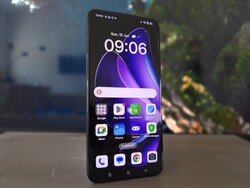
The Oppo Reno 13 Pro 5G is a high-quality smartphone with a long battery life at a fair price.
However, you will have to sacrifice some top-class features and some performance.
Oppo Reno13 Pro
- 06/22/2025 v8
Florian Schmitt
Possible alternatives compared
Image | Model / Review | Price | Weight | Drive | Display |
|---|---|---|---|---|---|
| Oppo Reno13 Pro MediaTek Dimensity 8350 ⎘ ARM Mali-G615 MP6 ⎘ 12 GB Memory, 512 GB | Amazon: 1. $11.99 Ibywind for Oppo Reno13 Pro ... 2. $6.99 GANGANPRO 1 Pack Privacy Scr... 3. $9.67 MAOUICI Tempered Glass for O... List Price: 799€ | 195 g | 512 GB UFS 3.1 Flash | 6.83" 2800x1272 450 PPI AMOLED | |
| Xiaomi Poco F7 Ultra Qualcomm Snapdragon 8 Elite ⎘ Qualcomm Adreno 830 ⎘ 16 GB Memory, 512 GB | Amazon: 1. $539.99 XIAOMI Poco F7 PRO 5G + 4G L... 2. $7.99 Suttkue for Xiaomi Poco F7 P... 3. $11.99 Ibywind For Xiaomi Poco F7 U... List Price: 800€ | 212 g | 512 GB UFS 4.1 Flash | 6.67" 3200x1440 526 PPI Flow AMOLED | |
| Xiaomi 15 Pro Qualcomm Snapdragon 8 Elite ⎘ Qualcomm Adreno 830 ⎘ 16 GB Memory, 1024 GB | Amazon: 1. $10.79 Ibywind for Xiaomi 15T Pro 5... 2. $4.99 Kicvbnco 3 Pack For Xiaomi 1... 3. $7.99 Suttkue for Xiaomi 15T Pro S... List Price: 810€ | 213 g | 1 TB UFS 4.0 Flash | 6.73" 3200x1440 521 PPI AMOLED | |
| OnePlus 13R Qualcomm Snapdragon 8 Gen 3 ⎘ Qualcomm Adreno 750 ⎘ 12 GB Memory, 256 GB | Amazon: 1. $8.98 WILLONE [2+2 Pack] for OnePl... 2. $7.99 Supershieldz (3 Pack) Design... 3. $9.98 JZG 3 Pack Screen Protector ... List Price: 749€ | 206 g | 256 GB UFS 4.0 Flash | 6.78" 2780x1264 450 PPI AMOLED | |
| Realme GT 6 Qualcomm Snapdragon 8s Gen 3 ⎘ Qualcomm Adreno 735 ⎘ 16 GB Memory, 512 GB | Amazon: 1. $11.99 Ibywind for Realme GT 6 5G/G... 2. $10.19 Ibywind Screen Protector For... 3. $8.99 QWFORQW [2+2 Pack for Realme... List Price: 800€ | 199 g | 512 GB UFS 4.0 Flash | 6.78" 2780x1264 450 PPI AMOLED |
Transparency
The selection of devices to be reviewed is made by our editorial team. The test sample was provided to the author as a loan by the manufacturer or retailer for the purpose of this review. The lender had no influence on this review, nor did the manufacturer receive a copy of this review before publication. There was no obligation to publish this review. As an independent media company, Notebookcheck is not subjected to the authority of manufacturers, retailers or publishers.
This is how Notebookcheck is testing
Every year, Notebookcheck independently reviews hundreds of laptops and smartphones using standardized procedures to ensure that all results are comparable. We have continuously developed our test methods for around 20 years and set industry standards in the process. In our test labs, high-quality measuring equipment is utilized by experienced technicians and editors. These tests involve a multi-stage validation process. Our complex rating system is based on hundreds of well-founded measurements and benchmarks, which maintains objectivity. Further information on our test methods can be found here.




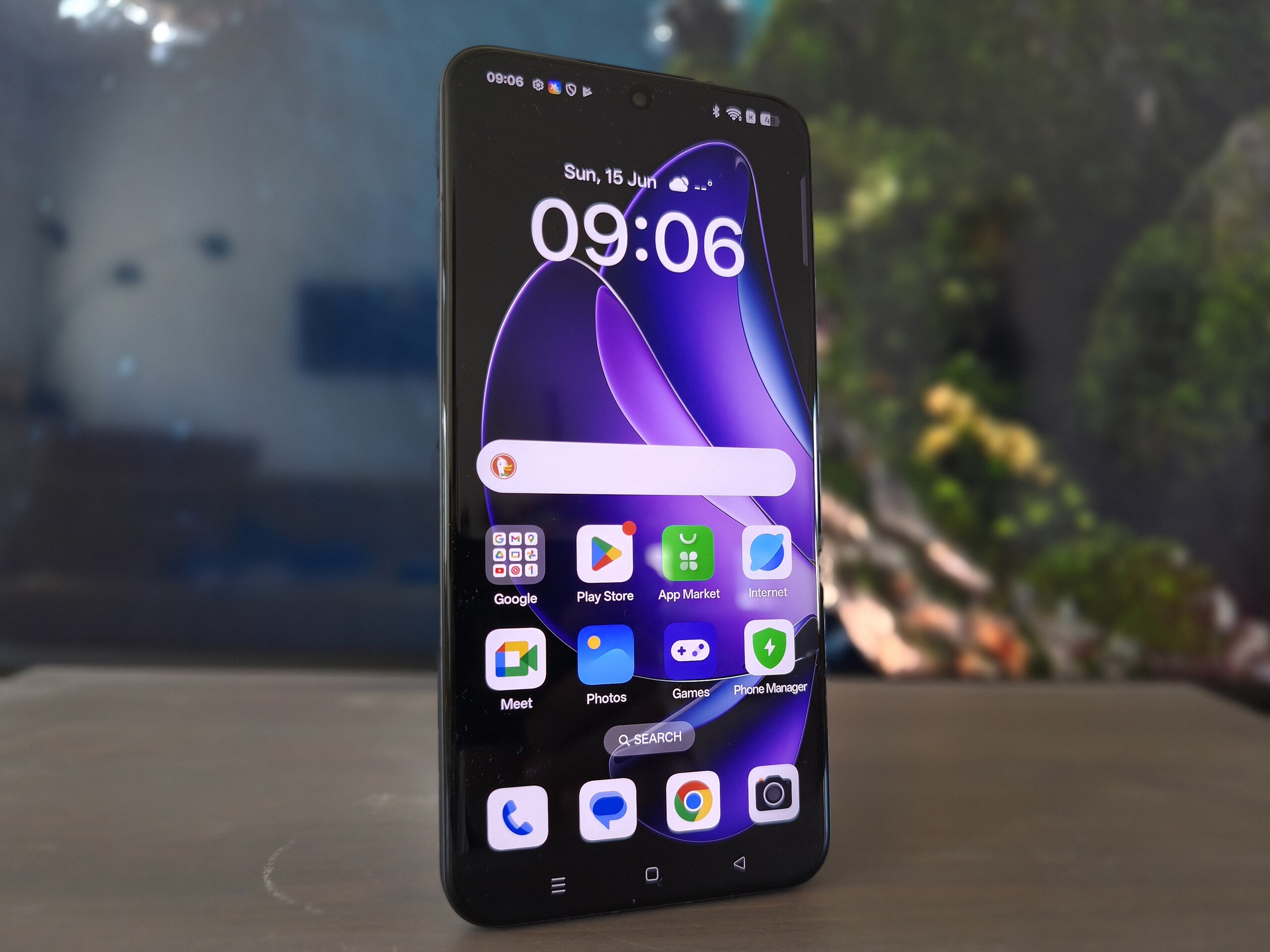

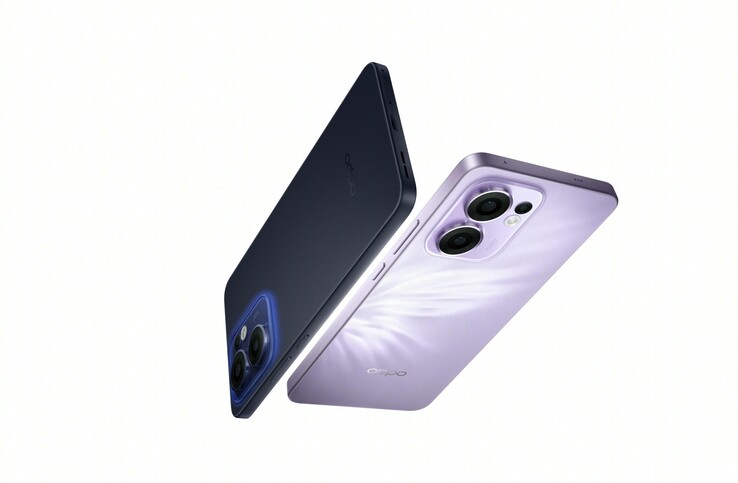










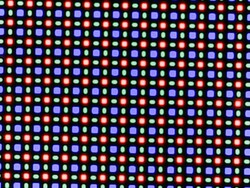
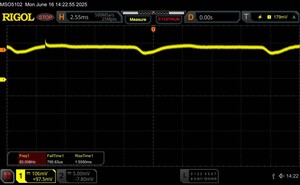






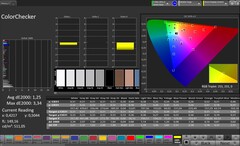
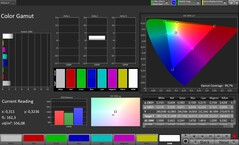
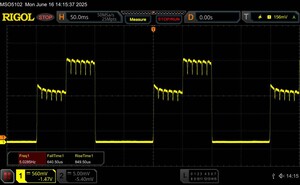
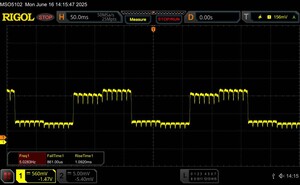
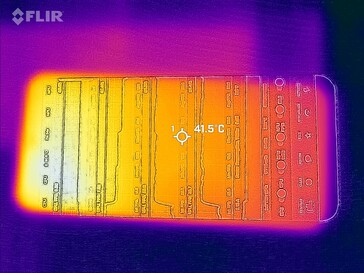
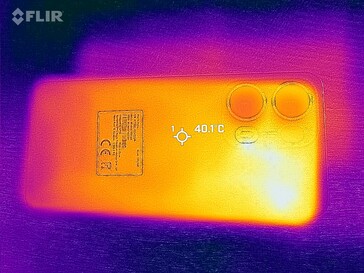
 Total Sustainability Score:
Total Sustainability Score: 















